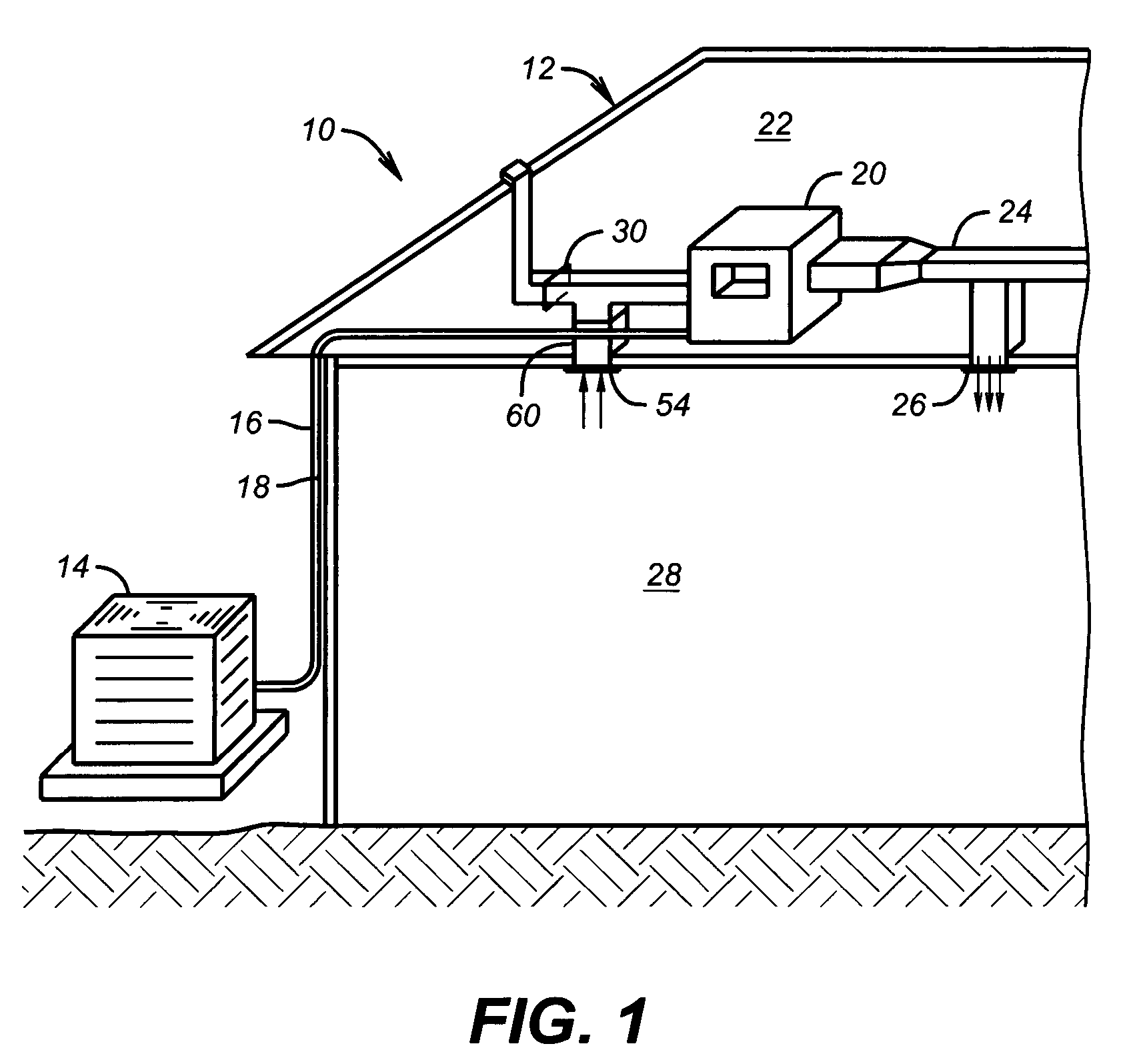Air conditioning system with moisture control
a technology of air conditioning system and humidity control, which is applied in the direction of temperatue control, dynamo-electric motor/converter stopper, starter details, etc., can solve the problems of toxic mold, poor ventilation of indoor spaces, and accumulation of contaminants in the interior air, so as to accelerate dehumidification and prevent the buildup of humidity levels. , the effect of reducing the buildup of contaminants
- Summary
- Abstract
- Description
- Claims
- Application Information
AI Technical Summary
Benefits of technology
Problems solved by technology
Method used
Image
Examples
Embodiment Construction
[0024]Referring first to FIG. 1, there is shown an exemplary air conditioning system 10 that is used for cooling of a home 12. The air conditioning system 10 includes a condensing unit 14 that is located outside of the home 12. Fluid conduits 16, 18 interconnect the condensing unit 14 with a furnace / air handler / evaporator unit 20 that is located in the attic space 22 of the home 12. Ductwork 24 extends from the furnace / air handler / evaporator 20 to a number of vents 26 (one shown) that permit conditioned air to flow into the occupied portions 28 of the home 12. A motorized outside air damper 30 is incorporated into the return air ductwork 60. The air damper 30 is a known device that may be selectively opened and closed to admit outside air into the return air ductwork 60.
[0025]FIG. 2 is a schematic illustration of components associated primarily with the furnace / air handler / evaporator unit 20 of the air conditioning system 10. As may be seen, the furnace / air handler / evaporator 20 inc...
PUM
 Login to View More
Login to View More Abstract
Description
Claims
Application Information
 Login to View More
Login to View More - R&D
- Intellectual Property
- Life Sciences
- Materials
- Tech Scout
- Unparalleled Data Quality
- Higher Quality Content
- 60% Fewer Hallucinations
Browse by: Latest US Patents, China's latest patents, Technical Efficacy Thesaurus, Application Domain, Technology Topic, Popular Technical Reports.
© 2025 PatSnap. All rights reserved.Legal|Privacy policy|Modern Slavery Act Transparency Statement|Sitemap|About US| Contact US: help@patsnap.com



